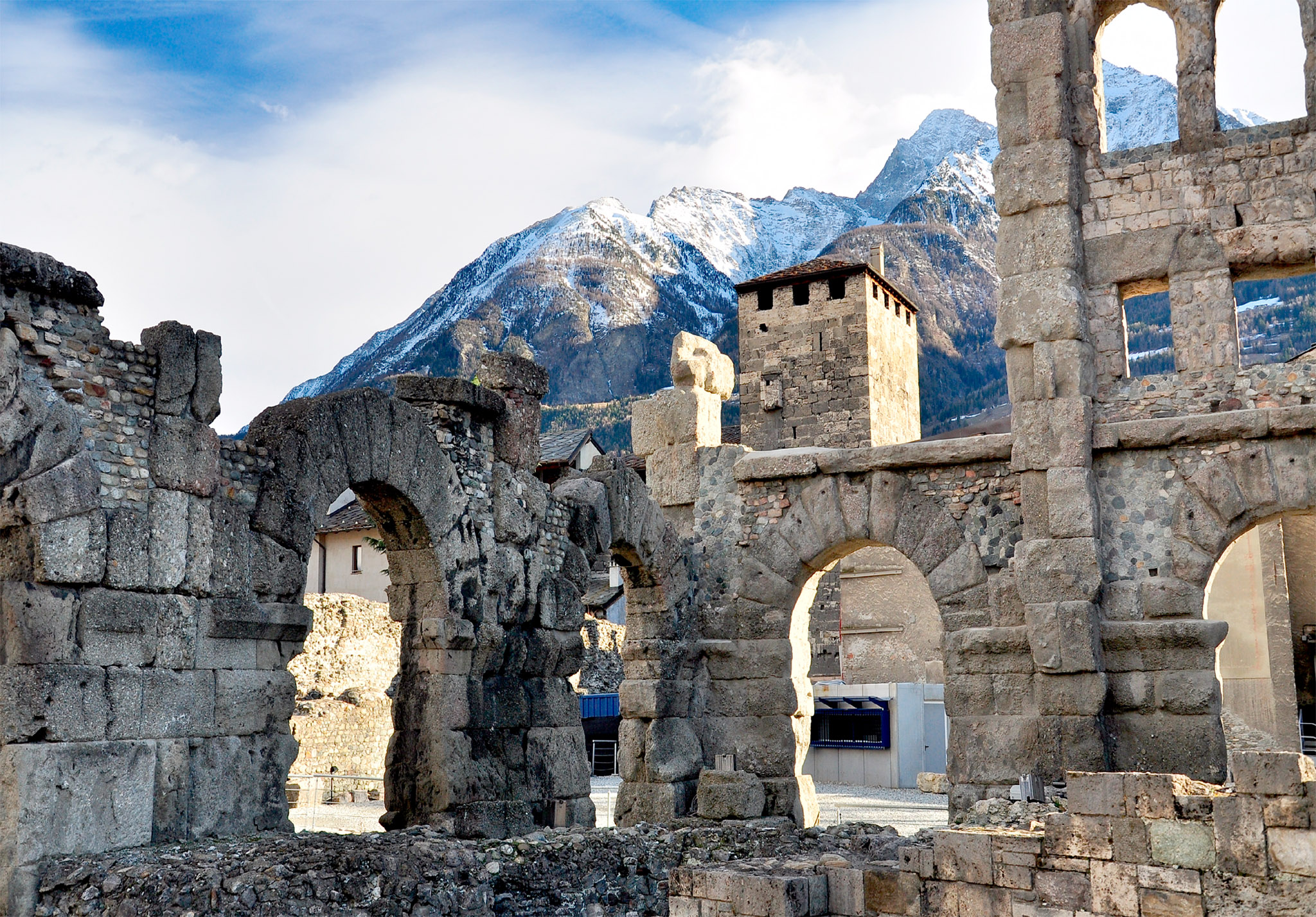
t Roman ruins in Aosta, with the dramatic background of the Alps

t Roman ruins in Aosta, with the dramatic background of the Alps
Experience Valle D’Aosta And Piedmont
Piedmont and the neighbouring Valle d’Aosta are – apart from Turin and its cultural splendours – essentially countryside. To the north lie the Alps, with ski resorts such as Courmayeur, and the wild stretches of the Parco Nazionale del Gran Paradiso. To the south lie the vineyard-clad hills around Barolo, and seemingly endless fields of grain and rice, used in the local dish, risotto.
The northwest is also rich in culture. From the 11th century to the 18th, both the verdant Valle d’Aosta and Piedmont were part of the French-speaking principality of Savoy and enjoyed the influences of both sides of the Alpine divide. Even today, French and dialectal variants are still spoken in the remote valleys of Piedmont and in much of the Valle d’Aosta. It was only under Duke Emanuele Filiberto in the 16th century that the region was brought definitively into the Italian sphere of influence; and later it was to play the key role in the Risorgimento, the ambitious movement that united Italy under a king from Piedmont. The vestiges of this history are to be found in the medieval castles of the Valle d’Aosta and the clusters of chapels known as sacri monti (sacred mountains) built into the foothills of the Alps. The most impressive architecture in the northwest is undoubtedly to be found in Turin, a much underrated and surprisingly elegant Baroque city which boasts, among other things, one of the best Egyptian museums in the world.
Piedmont is also known for its industry – Fiat in Turin, Olivetti in Ivrea, Ferrero in Alba – but it has not forgotten its agricultural roots, and food and drink play an important role in the life of the region: the hills of southern Piedmont produce many of the great Italian red wines.